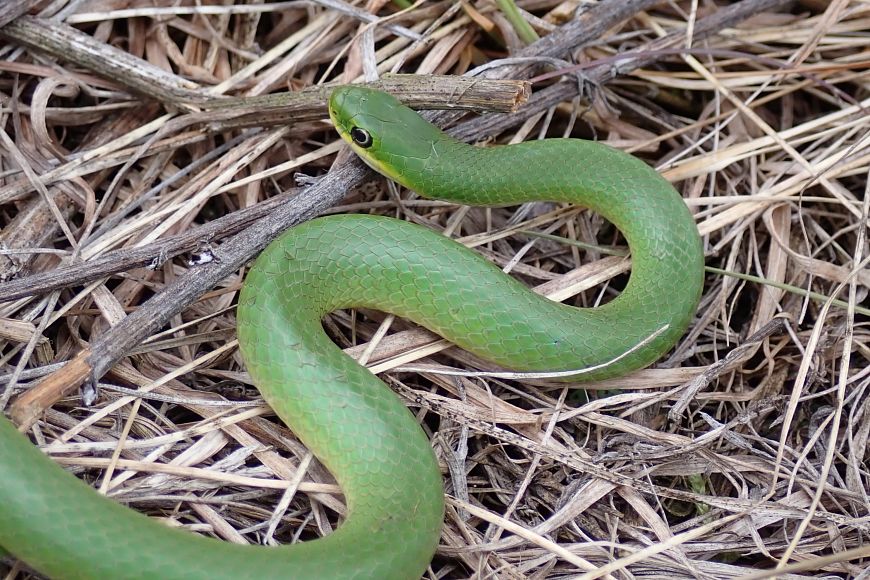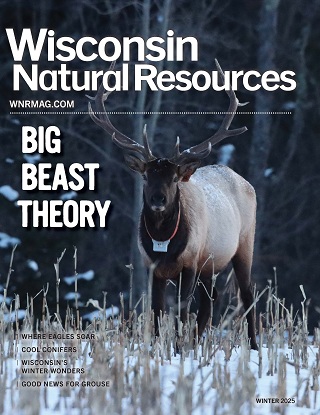Contact: Rori Paloski, DNR Conservation Biologist
Rori.Paloski@wisconsin.gov or 608-516-3742
DNR Announces Partnership With University Of Wisconsin Schools For Greensnake Surveys
 Volunteers at University of Wisconsin schools will help the DNR gather data on smooth greensnakes.
Photo credit: Emma Pauly-Hubbard
Volunteers at University of Wisconsin schools will help the DNR gather data on smooth greensnakes.
Photo credit: Emma Pauly-Hubbard
MADISON, Wis. – The Wisconsin Department of Natural Resources (DNR) today announced the beginning of surveys to track smooth greensnake populations in the state. Surveys will be conducted at select sites across the species' range in partnership with student volunteers in the Forest and Wildlife Ecology Department at the University of Wisconsin-Madison and the College of Natural Resources and Department of Biology at the University of Wisconsin-Stevens Point.
The goal of the survey is to get baseline data on several greensnake populations to detect future declines, should they take place. Protocols for these surveys have been developed with input from Allison Sacerdote-Velat of the Chicago Academy of Sciences/Peggy Notebaert Nature Museum, a nationally recognized expert on smooth greensnakes. While this snake is considered common in Wisconsin, it’s a regional species of greatest conservation need. Species of greatest conservation need are those with low and declining populations and in need of conservation action.
“With nearby states seeing significant declines, this information is important to help us anticipate where a problem could arise and be proactive in our conservation efforts,” said Rori Paloski, DNR conservation biologist. “Because greensnakes are relatively small and blend in well, they could be overlooked without an intentional survey. Partnering with universities is a great way to give students valuable, hands-on experience while positively impacting conservation efforts in the state.”
The smooth greensnake is one of Wisconsin’s 21 snake species and is nonvenomous and quite docile. Its vibrant green color makes it easy to identify, although buff-colored individuals may be found in central Wisconsin. No matter the adult color, the young are olive-green upon hatching. Smooth greensnakes frequent prairies, oak savannas, bracken grasslands, open areas in pine barrens and grassy areas along forest edges. Greensnakes feed on insects, grubs and worms.
Support Opportunities
- Avoid using pesticides and insecticides that harm the smooth greensnake and its food.
- Sign up for the State Natural Areas Volunteer Program to contribute to the care of rare and endangered species habitat in Wisconsin.
- Submit observations of rare Wisconsin species.
- Support Wisconsin conservation efforts with a donation to the Endangered Resources Fund.
For more information on the snakes of Wisconsin, visit the DNR’s Herps of Wisconsin webpage.

